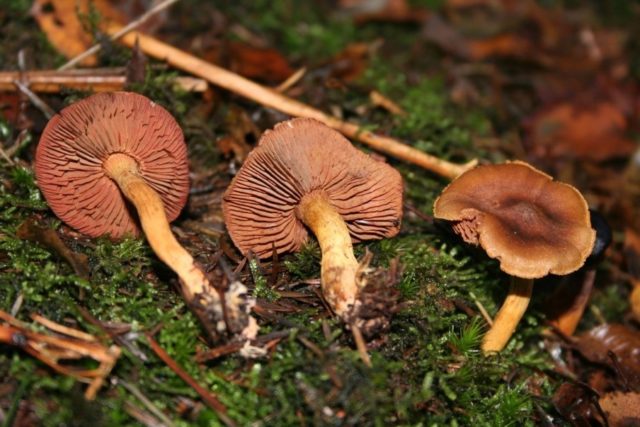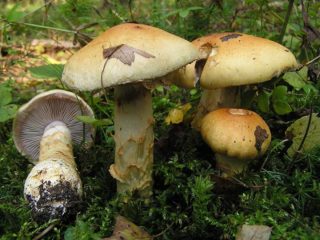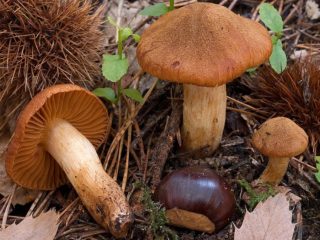Content
The blood-reddish cobweb is far from the most popular species of the Cobweb family. Latin name: Cortinarius semisanguineus. There are a number of synonyms for this variety: semi-blood-red webwort, blood-reddish webwort, red-plated webwort.
Description of the blood-reddish web spider

Belongs to the group of inedible mushrooms
The fruiting body of the described gift of the forest is presented in the form of a small cap and stem.The pulp is thin, brittle, yellowish-brown or ocher in color. It emits an unpleasant aroma, reminiscent of iodoform or radish. It also has a bitter or bland taste. The spores are almond-shaped, slightly rough, ellipsoid. Spore powder is rusty brown in color.
Description of the cap

These mushrooms prefer to grow in coniferous forests
At the initial stage of ripening, the cap of the spider web is blood-reddish and bell-shaped. It opens up quite quickly and takes on a flat shape with a small tubercle located in the center. The surface of the cap is velvety, dry, leathery. It is colored in olive-brown or yellowish-brown shades, and becomes reddish-brown in adulthood. The size in diameter varies from 2 to 8 cm. On the lower side there are quite frequent plates, fused with teeth. In young specimens they are a bright, rich red color, but after the spores mature they acquire a yellow-brown tone.
Description of the leg

Such specimens grow from August to September
The leg is cylindrical, slightly widened at the bottom. Its length varies from 4 to 10 cm, and its thickness is 5-10 mm in diameter. Quite often it is curved. The surface is dry, velvety, covered with barely noticeable remains of the blanket. The leg of a young specimen is yellow-ochre; with age it becomes rusty-brown, and spores form on its surface.
Where and how does it grow
Most often, the species in question grows in coniferous forests, forming mycorrhiza with spruce or pine. Prefers sandy soils and moss litter. Active fruiting occurs from August to September. In Russia, this gift of the forest is widespread in regions characterized by a temperate climate.In addition, it can be found in Western and Eastern Europe, as well as North America. https://youtu.be/oO4XoHYnzQo
Is the mushroom edible or not?
The species in question belongs to the group of inedible mushrooms. Despite the fact that it does not contain toxic substances, it is not suitable for food due to its unpleasant odor and bitter taste.
Doubles and their differences
In terms of external characteristics, the species in question is most similar to the following forest products:
- Purple webwort – is a conditionally edible specimen. It differs from the blood-reddish one in its bluish flesh with a pleasant aroma. In addition, you can recognize your double by its purple leg.
- Large cobweb - belongs to the group of edible mushrooms. The cap is colored gray-violet; in young specimens the flesh is purple, which is a distinctive feature from the bloody
Conclusion
Bloody-reddish cobweb can be found not only in Russia, but also abroad. Despite its wide distribution, this variety is not particularly popular among mushroom pickers because it is inedible. However, such a specimen can be used to dye wool reddish-pink.










